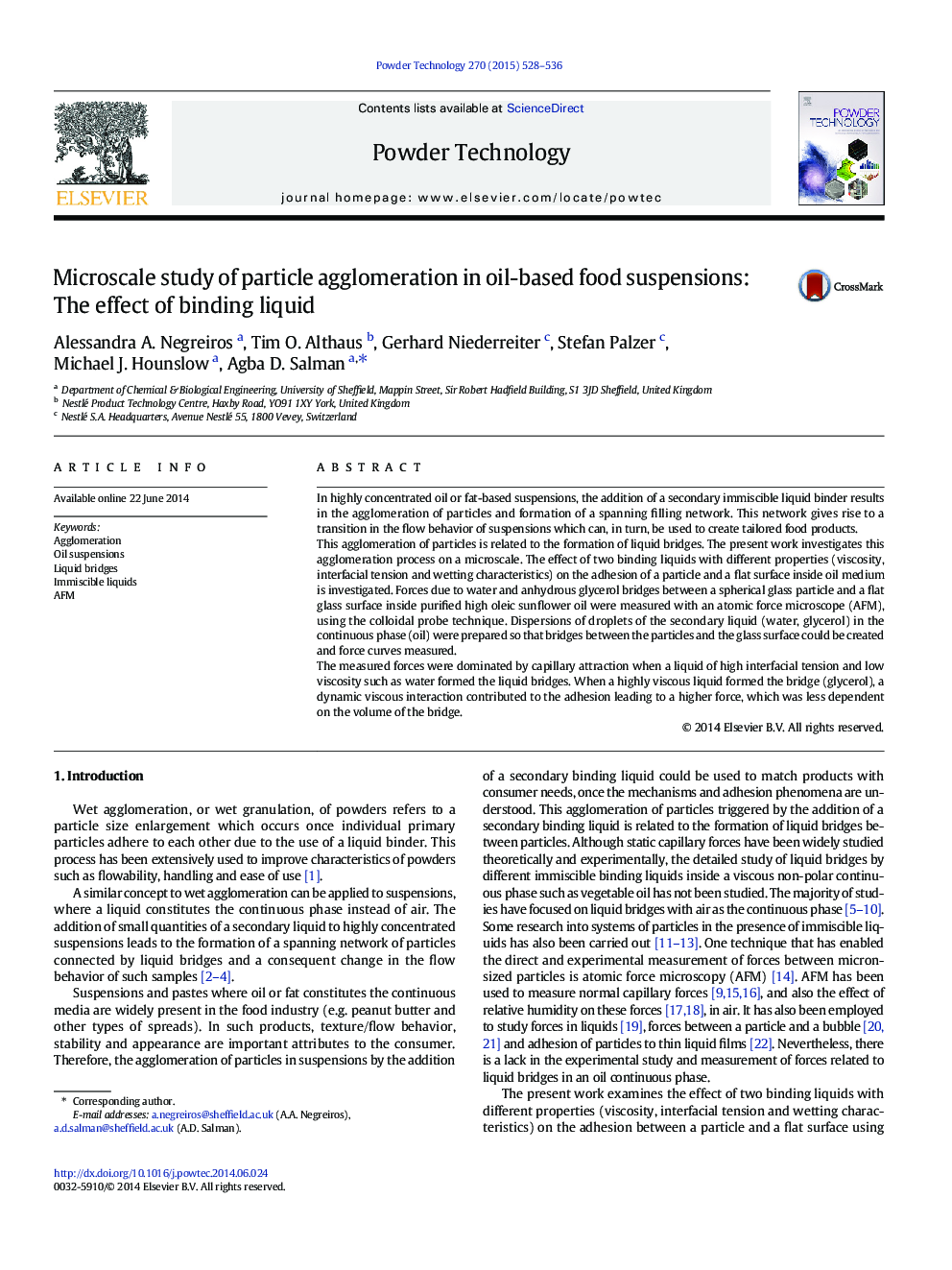| کد مقاله | کد نشریه | سال انتشار | مقاله انگلیسی | نسخه تمام متن |
|---|---|---|---|---|
| 235916 | 465652 | 2015 | 9 صفحه PDF | دانلود رایگان |
• Interparticle forces in oil media have been measured with an AFM.
• The effect of the binding liquid properties on the adhesion is investigated.
• High adhesion forces indicate the formation of liquid bridge between surfaces.
• For water bridges, adhesion is dominated by capillary attraction.
• For glycerol bridges, a dynamic viscous interaction contributes to the adhesion.
In highly concentrated oil or fat-based suspensions, the addition of a secondary immiscible liquid binder results in the agglomeration of particles and formation of a spanning filling network. This network gives rise to a transition in the flow behavior of suspensions which can, in turn, be used to create tailored food products.This agglomeration of particles is related to the formation of liquid bridges. The present work investigates this agglomeration process on a microscale. The effect of two binding liquids with different properties (viscosity, interfacial tension and wetting characteristics) on the adhesion of a particle and a flat surface inside oil medium is investigated. Forces due to water and anhydrous glycerol bridges between a spherical glass particle and a flat glass surface inside purified high oleic sunflower oil were measured with an atomic force microscope (AFM), using the colloidal probe technique. Dispersions of droplets of the secondary liquid (water, glycerol) in the continuous phase (oil) were prepared so that bridges between the particles and the glass surface could be created and force curves measured.The measured forces were dominated by capillary attraction when a liquid of high interfacial tension and low viscosity such as water formed the liquid bridges. When a highly viscous liquid formed the bridge (glycerol), a dynamic viscous interaction contributed to the adhesion leading to a higher force, which was less dependent on the volume of the bridge.
Figure optionsDownload as PowerPoint slide
Journal: Powder Technology - Volume 270, Part B, January 2015, Pages 528–536
